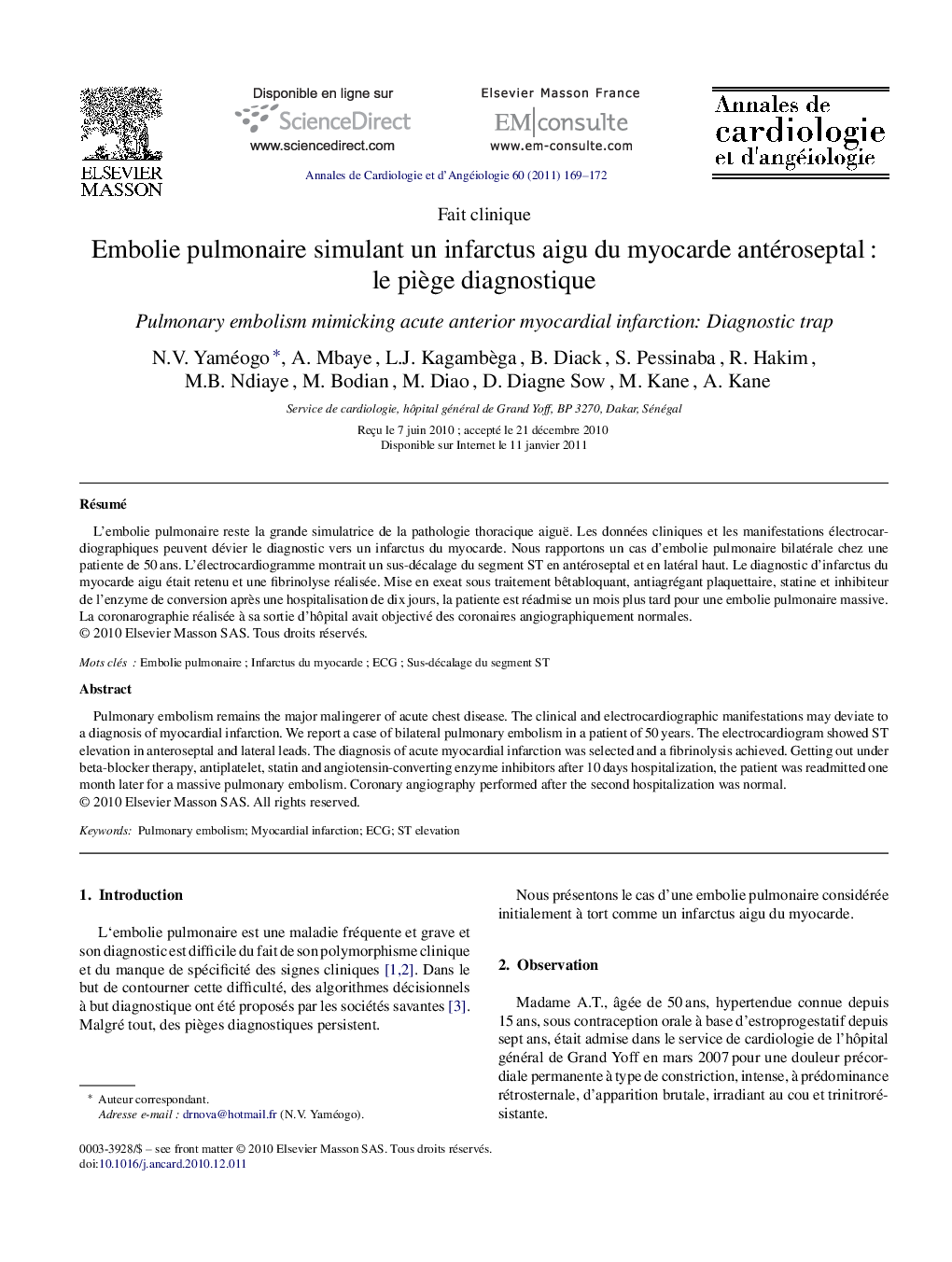| Article ID | Journal | Published Year | Pages | File Type |
|---|---|---|---|---|
| 2869186 | Annales de Cardiologie et d'Angéiologie | 2011 | 4 Pages |
RésuméL’embolie pulmonaire reste la grande simulatrice de la pathologie thoracique aiguë. Les données cliniques et les manifestations électrocardiographiques peuvent dévier le diagnostic vers un infarctus du myocarde. Nous rapportons un cas d’embolie pulmonaire bilatérale chez une patiente de 50 ans. L’électrocardiogramme montrait un sus-décalage du segment ST en antéroseptal et en latéral haut. Le diagnostic d’infarctus du myocarde aigu était retenu et une fibrinolyse réalisée. Mise en exeat sous traitement bêtabloquant, antiagrégant plaquettaire, statine et inhibiteur de l’enzyme de conversion après une hospitalisation de dix jours, la patiente est réadmise un mois plus tard pour une embolie pulmonaire massive. La coronarographie réalisée à sa sortie d’hôpital avait objectivé des coronaires angiographiquement normales.
Pulmonary embolism remains the major malingerer of acute chest disease. The clinical and electrocardiographic manifestations may deviate to a diagnosis of myocardial infarction. We report a case of bilateral pulmonary embolism in a patient of 50 years. The electrocardiogram showed ST elevation in anteroseptal and lateral leads. The diagnosis of acute myocardial infarction was selected and a fibrinolysis achieved. Getting out under beta-blocker therapy, antiplatelet, statin and angiotensin-converting enzyme inhibitors after 10 days hospitalization, the patient was readmitted one month later for a massive pulmonary embolism. Coronary angiography performed after the second hospitalization was normal.
